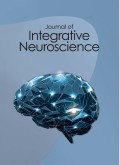Authors: Ghali, Michael George Zaki
Article Type:
Review Article
Abstract:
The sympathetic nervous system maintains and regulates arterial pressure and tissue perfusion, via control of cardiac output and vasomotor tone. Sympatho-vascular-mediated increases in blood pressure are effected by arterioloconstriction, which causes an increase in afterload, and/or venoconstriction, which increases venous return, left ventricular preload, and consequently, the force of cardiac contraction via Frank-Starling mechanisms; withdrawal of sympathetic drive elicits reciprocal effects. Spinalization reduces mammalian arterial pressure to 40–50 mm Hg consequent to the elimination of descending medullary pre-sympathetic bulbospinal drive to preganglionic sympathetic fibers in the intermediolateral cell column of the spinal cord. Beyond agreement that sympathetic tone is generated supraspinally,
…there is only controversy. One hypothesis posits that pre-sympathetic medullary regions, such as the rostral ventrolateral medulla (RVLM) and caudal raphé group, possess intrinsic tonic activity. Alternatively, pre-sympathetic medullary regions may receive tonic excitation from other areas in the brainstem. Neurons in the lateral tegmental field (LTF), an exclusively propriobulbar entity (cf. pre-Bötzinger complex – the propriobulbar inspiratory rhythmogenic kernel of the respiratory network), fire before and project to pre-sympathetic units in RVLM and caudal raphé and exhibit activity correlated to the cardiac-related rhythm in sympathetic nerve discharge, making the LTF a likely candidate for the primary source of basal sympathoexcitation. The LTF is additionally involved in a variety of cardiovascular and sympathetic reflexes (i.e., baroreflex, Bezold–Jarisch reflex). As it receives descending afferents from the infralimbic cortex and associated limbic structures, suggesting a role in the sympathetic response to fear, as well as vestibular inputs, consistent with a role in coordinating the sympathetic response with emesis proper, the LTF appears to play an extensive integrative role. In this review, we discuss the LTF, a once mysterious, poorly-characterized, and ill-defined region, the contribution of which to cardiovascular reflexes and basal sympathoexcitation has been more thoroughly elucidated in recent years and any model of central control of sympathetic output must take into consideration the contribution of this important region.
Show more
Keywords: Medulla, reticular formation, sympathetic, blood pressure, fast oscillations
DOI: 10.3233/JIN-170010
Citation: Journal of Integrative Neuroscience,
vol. 16, no. 2, pp. 189-208, 2017
Price: EUR 27.50






